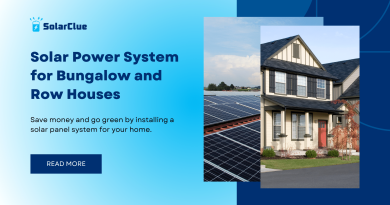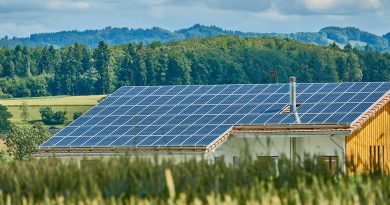Solar Panels Face South: Optimal Sun Exposure Explained
Solar panels have become an increasingly popular solution for harnessing clean and renewable energy. By capturing the sun’s rays and converting them into electricity, solar panels are revolutionizing the way we power our homes and businesses. However, have you ever wondered why solar panels are typically installed facing south? In this blog, we will explore the reasons behind this widely adopted practice and shed light on the benefits it brings.
Reasons of solar panels facing south?
Maximizing Sun Exposure
When it comes to solar panel installation, maximizing sun exposure is crucial for generating optimal electricity output. Sunlight is the primary source of energy for solar panels, and their efficiency depends on the availability of direct sunlight. Therefore, it is essential to position solar panels in a way that allows them to capture the maximum amount of sunlight for as long as possible throughout the day.
Solar Panel Orientation
The orientation of solar panels is determined by the geographical location of the installation site. In the Northern Hemisphere, where the majority of countries are located, solar panels are generally angled towards the south. This positioning is commonly known as a south-facing or south-oriented orientation.
The Sun’s Path
To understand the logic behind south-facing solar panels, we need to take into account the path of the sun across the sky. In the Northern Hemisphere, the sun rises in the east and sets in the west. However, its trajectory is not perfectly horizontal; instead, it follows an arc that peaks at noon.
Optimal Angle of Incidence
When solar panels are installed facing south, they are more directly exposed to sunlight throughout the day. This maximizes the angle of incidence, which refers to the angle at which sunlight strikes the surface of the solar panels. By having the highest possible angle of incidence, solar panels can capture the maximum amount of solar energy, thus increasing their efficiency.
Shade Avoidance
Another significant advantage of positioning solar panels facing south is the avoidance of shading issues. Shading occurs when objects, such as trees or buildings, cast shadows over the solar panels, reducing their exposure to sunlight. By facing south, solar panels minimize the obstruction of shadows, ensuring the efficiency of the entire system is not compromised.
Array Configuration
Solar panels are commonly installed in arrays, which consist of multiple panels aligned together to form a larger system. When setting up an array, the orientation of the individual panels is carefully considered to create an efficient configuration. A south-facing orientation ensures that all panels in the array receive sunlight evenly, allowing for a consistent output across the entire system.
Seasonal Adjustments
While south-facing orientation is optimal for year-round sun exposure, it is not the only factor to consider. To account for the sun’s varying position throughout the seasons, solar panels are often tilted at an angle. This tilt can be adjusted according to the latitude of the installation location. By tilting the panels, they can maintain an optimal angle of incidence during different times of the year, further enhancing their efficiency.
Conclusion
Maximize your solar potential with SolarClue® as we explain the significance of south-facing solar panels. Benefit from optimal sun exposure, increased energy production, and higher efficiency. Our expert guidance ensures the correct orientation and tilt angles, considering geographical nuances for peak performance. While facing south is ideal, SolarClue® navigates shading issues and recommends innovative technologies to enhance panel efficiency. Whether for homeowners or businesses, investing in south-facing solar panels through SolarClue® guarantees long-term benefits, including substantial energy savings and a greener, more sustainable energy future. Contact us for a personalized consultation and unlock the full potential of solar living with SolarClue®.
Frequently Asked Questions
South-facing panels receive the maximum sunlight exposure throughout the day, optimizing energy production.
Proper orientation ensures panels capture sunlight more effectively, maximizing energy production and overall system efficiency.
The optimal tilt angle depends on the geographical location. Generally, a tilt angle equal to the latitude of the installation site is recommended.
While south-facing is optimal, panels facing east or west can still generate power, although with reduced efficiency and different energy production patterns.
Shading can significantly reduce the efficiency of south-facing panels. It’s crucial to minimize shading to ensure optimal energy production.
Yes, south-facing panels contribute to peak energy production during solar noon, maximizing the overall daily energy yield.
Facing south is crucial in the Northern Hemisphere for optimal sun exposure. In the Southern Hemisphere, panels should face north.
SolarClue® provides expert guidance, evaluating the geographical location, sunlight patterns, and shading considerations to recommend the optimal orientation for solar panels, ensuring maximum energy production.
Advanced tracking systems and smart technologies can enhance the performance of south-facing panels by adjusting their orientation to track the sun’s movement throughout the day.
Homeowners and businesses benefit from higher energy production, increased savings on electricity bills, and a more sustainable and environmentally friendly energy source, making the investment in solar panels facing south highly rewarding.




